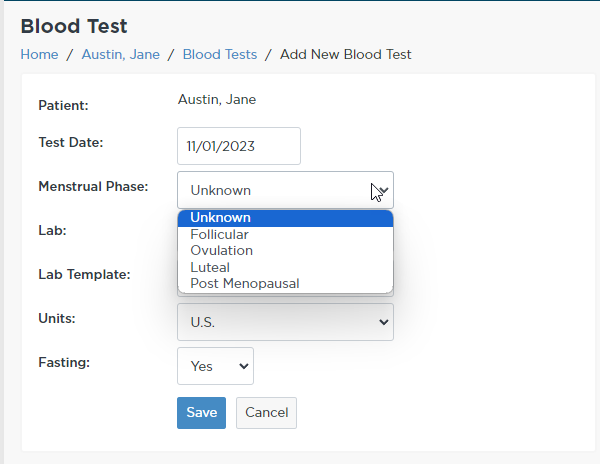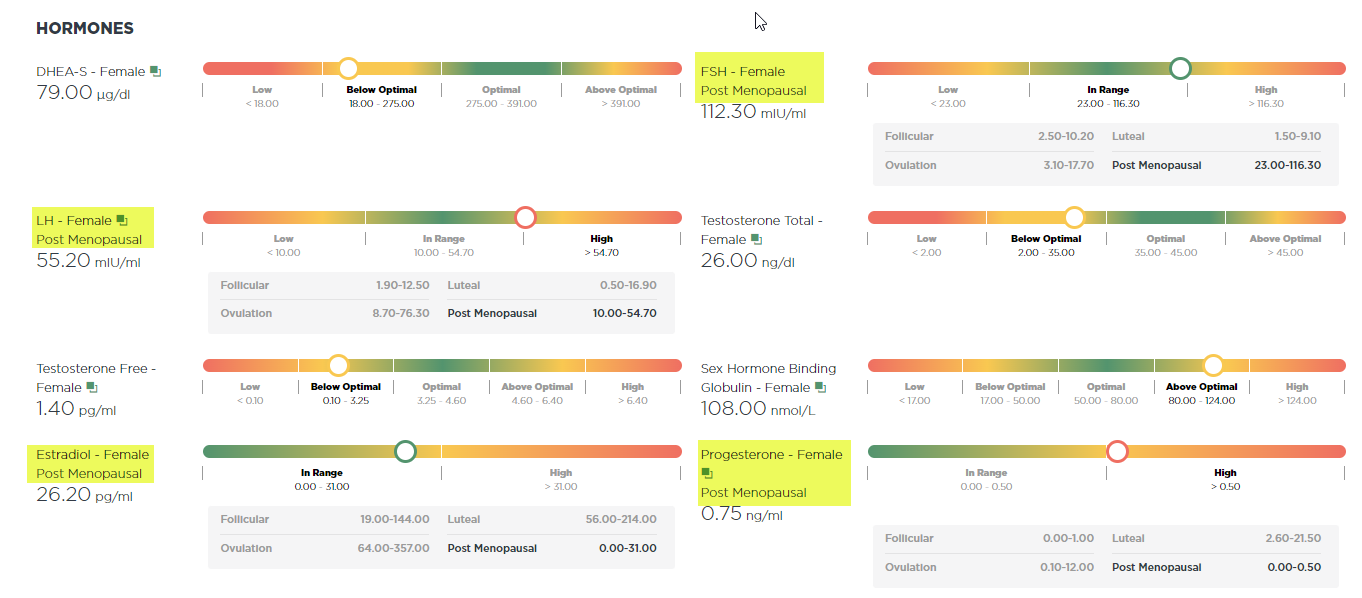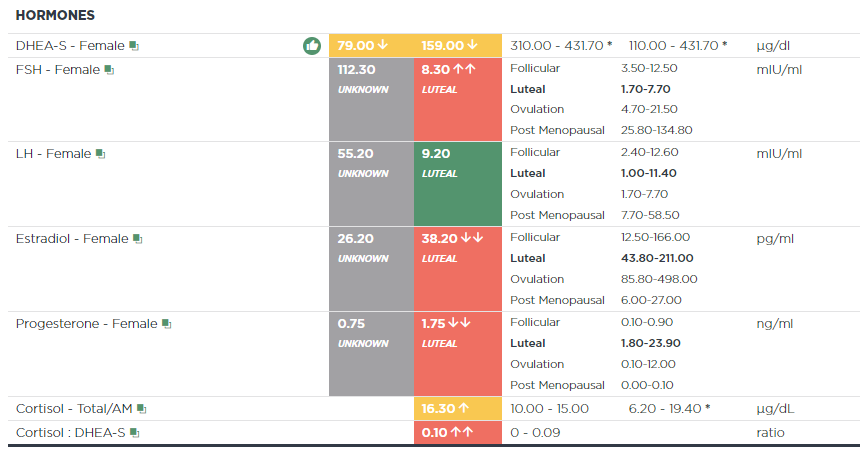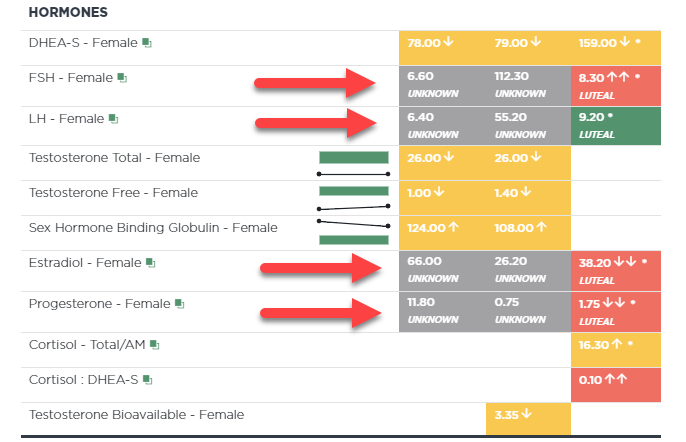We have made a significant change to how the ODX reporting adapts to female hormones tested during the different menstrual phases and also for your menopausal patients.
We now ask you to select the menstrual phase when you add a female blood test to the platform. This allows us to adjust the reporting to accommodate the differences in range for female hormones across a woman's cycle and into postmenopausal. This post will show you all the ways the platform can report on the variable ranges for these 4 hormones:
When you add a lab for a female patient, you will be asked to select the Menstrual Phase of the blood test. There are 5 options:

We've chosen to use the standard laboratory reference values for the four key female hormones, which vary throughout the menstrual cycle and after menopause. Current research doesn't provide clear-cut 'optimal' hormone levels for each stage of the cycle, which makes it difficult to set one 'perfect' range that applies to everyone. Therefore, we've designed our platform so you can specify the patient's menstrual phase when ordering a hormone blood test. This way, the test results will reflect the appropriate reference values for that specific time in the cycle or for the postmenopausal stage. This method allows you, the healthcare provider, to interpret hormone levels more accurately based on the individual's cycle or menopausal status.
When you select "Unknown", we provide you with all 4 of the ranges without any indication of what's in or out of range. We don't know what phase, so we cannot use the usual graphic to show the result! Here's what this looks like in the "Blood Test Results" Report:

When you select Follicular, Ovulation, Luteal, or Post Menopausal, the "Blood Test Results Report" will present the result using the same graphic but we will also include all the ranges underneath with the "known" phase bolded. Here's an example of a Post Menopausal result:
We have re-tooled the "Comparative Report" to present the results in a similar fashion. Here's a test that compares the current blood test, which was done on a Luteal phase test, and a previous test that was done on an "Unknown" result:

Similarly, we have re-tooled the "History Report" to present the results in a similar fashion. Here's a test that shows all the results entered with a notation next to the result as to what phase that result was based on:

Thank you to everyone who has given us the feedback to help us shape these features. We’re super excited to keep working to make your clinical life easier and more efficient.